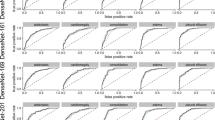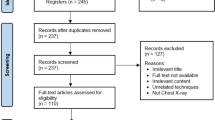Abstract
Machine learning and deep learning technologies are reshaping the global medical industry at a breakneck pace. Image classification is one of its rapidly expanding fields. It is incorporated into nearly all technologies aimed at achieving intelligent smart health systems. The current paper implements and applies two image classification models based on convolutional neural network (CNN) versions to various image classification datasets. The current work makes use of the significant lungs X-ray images from COVID-19 medical datasets. It analyses the models’ accuracy by adjusting their parameters such as layer count and activation function in order to identify the ideal parameters for CNN that provide the highest accuracy while classifying images. It evaluated the models’ performance on the desired dataset and calculated the F-score, specificity and sensitivity matrices to validate the suggested models, as well as analysing their behaviour as a function of the image type. It achieves an accuracy of 90% for lungs X-rays in the COVID-19 dataset.
Access this chapter
Tax calculation will be finalised at checkout
Purchases are for personal use only
Similar content being viewed by others
References
Ai T et al (2020) Correlation of chest CT and RT-PCR testing in coronavirus disease 2019 (COVID-19) in China: a report of 1014 cases. Radiology 2019:200642
Avni U et al (2011) X-ray categorization and retrieval on the organ and pathology level, using patch-based visual words. IEEE Trans Med Imaging 30(3):733–746
El Asnaoui K, Chawki Y (2020) Using X-ray images and deep learning for automated detection of coronavirus disease. J Biomol Struct Dyn 1–12
Fukushima K (1980) Neocognitron: a self organizing neural network model for a mechanism of pattern recognition unaffected by shift in position. Biol Cybern 36:193–202
Jaeger S et al (2014) Automatic tuberculosis screening using chest radiographs. IEEE Trans Med Imaging 33(2):233–245
Kaiming H et al (2015) Deep residual learning for image recognition
Kamble B, Sahu SP, Doriya R (2020) A review on lung and nodule segmentation techniques. Advances in data and information sciences. Springer, Berlin, pp 555–565
Krizhevsky A, Sutskever I, Hinton GE (2012) Imagenet classification with deep convolutional neural networks. In: Proceedings of the advances in neural information processing systems, Lake Tahoe, Nevada, 3–6 Dec 2012, pp 1097–1105
LeCun Y Lenet-5, Convolutional neural networks. Available online: http://yann.lecun.com/exdb/lenet. Accessed on 20 May 2015
LeCun Y, Bengio Y, Hinton G (2015) Deep learning. Nature 521:436–444
Melendez J et al (2015) A novel multiple-instance learning-based approach to computer-aided detection of tuberculosis on chest X-rays. IEEE Trans Med Imaging 34(1):179–192
Qian N (1999) On the momentum term in gradient descent learning algorithms. Neural Netw 12:145–151
Rahman T et al, Transfer learning with deep convolutional neural network (CNN) for pneumonia detection using chest X-ray
Rosado L et al (2016) Automated detection of malaria parasites on thick blood smears via mobile devices. Procedia Comput Sci 90:138–144. https://doi.org/10.1016/j.procs.2016.07.024
Sluimer I, Schilham A, Prokop M, Van Ginneken B (2006) Computer analysis of computed tomography scans of the lung: a survey. IEEE Trans Med Imaging 25(4):385–405
Szegedy C et al (2015) Going deeper with convolutions. In: Proceedings of the IEEE conference on computer vision and pattern recognition, Boston, MA, USA, 7–12 June 2015, pp 1–9
Author information
Authors and Affiliations
Corresponding author
Editor information
Editors and Affiliations
Rights and permissions
Copyright information
© 2023 The Author(s), under exclusive license to Springer Nature Singapore Pte Ltd.
About this paper
Cite this paper
Biswal, P., Behera, S., Jaiswal, R., Sarma, M., Rout, M., Barik, R. (2023). Medical Image Classifications: Deep Learning Prospective. In: Khanna, A., Gupta, D., Kansal, V., Fortino, G., Hassanien, A.E. (eds) Proceedings of Third Doctoral Symposium on Computational Intelligence . Lecture Notes in Networks and Systems, vol 479. Springer, Singapore. https://doi.org/10.1007/978-981-19-3148-2_46
Download citation
DOI: https://doi.org/10.1007/978-981-19-3148-2_46
Published:
Publisher Name: Springer, Singapore
Print ISBN: 978-981-19-3147-5
Online ISBN: 978-981-19-3148-2
eBook Packages: Intelligent Technologies and RoboticsIntelligent Technologies and Robotics (R0)




